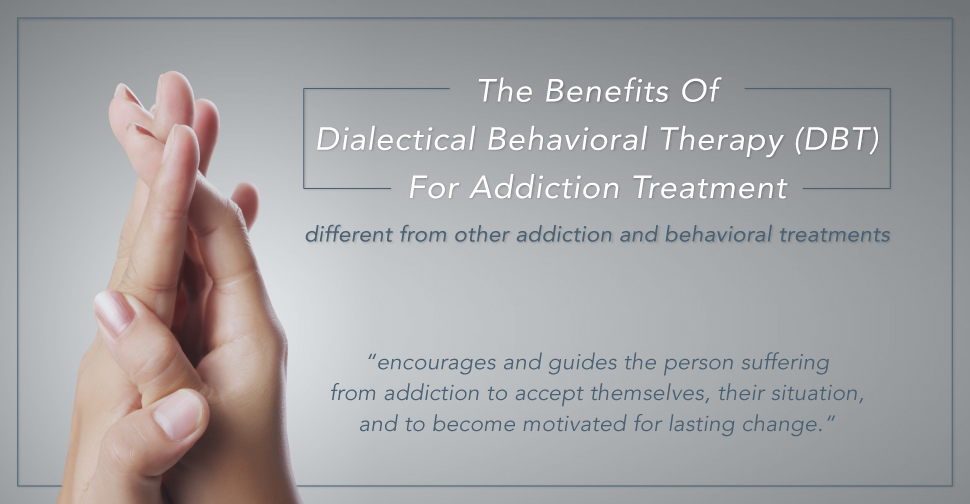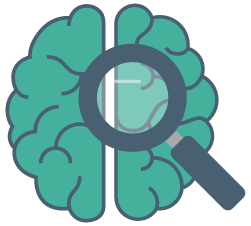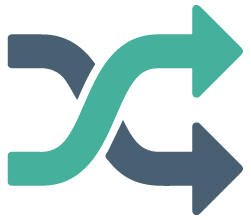
According to the 2014 National Survey on Drug Use and Health led by the Substance Abuse and Mental Health Services Administration (SAMHSA), 43.6 million people aged 18 and older suffered from a form of mental disorder in 2014. And in the same period, 20.2 million Americans suffered from a substance use disorder. Of these two statistics, 7.9 million people had both of these disorders. Due to the complexity of drug addiction, it can affect much more than the physical characteristics and health of a person; it can also weave its way into an individual’s emotional and mental health. As a result, many treatment centers are utilizing therapies that pay attention to both of these aspects and help heal a person suffering from addiction in the most effective way.
What Is Dialectical Behavioral Therapy (DBT)?
 Dialectical Behavioral Therapy (DBT) is a type of cognitive behavioral psychotherapy that is used to treat borderline personality disorders. However, this therapy has been shown to be very advantageous for people suffering from addiction and substance use disorders. DBT involves various types of cognitive behavioral methods for helping those with mental disorders and addiction, including problem solving and stimulus control, cognitive restructuring and other treatments. The term dialectical relates to ideas and opinions that are opposing, and DBT focuses on the concept that a person suffering from a mental illness or addiction needs two opposing forces to heal: change and acceptance.
Dialectical Behavioral Therapy (DBT) is a type of cognitive behavioral psychotherapy that is used to treat borderline personality disorders. However, this therapy has been shown to be very advantageous for people suffering from addiction and substance use disorders. DBT involves various types of cognitive behavioral methods for helping those with mental disorders and addiction, including problem solving and stimulus control, cognitive restructuring and other treatments. The term dialectical relates to ideas and opinions that are opposing, and DBT focuses on the concept that a person suffering from a mental illness or addiction needs two opposing forces to heal: change and acceptance.
What Is Involved In DBT?
DBT is a comprehensive treatment plan that consists of individual therapy, group therapy and a therapist consultation team. DBT has been shown to be especially effective because it is not only one treatment; instead, it is a series of different treatments that all work together. When compared to other private and group therapies, DBT is unique and focuses on the primary areas that have been found to be the most effective at helping someone heal who is suffering from addiction and co-existing mental health issues. According to the National Center for Biotechnology Information, the primary areas of treatment through DBT include five functions: biosocial theory, emotions, dialectical philosophy, acceptance and mindfulness.
The five functions of DBT involve enhancing the capabilities of the person suffering from mental health disorders and addiction, generalizing capabilities, improving motivation and decreasing dysfunctional behaviors, enhancing and maintaining therapist abilities and motivation, and structuring the environment to be the most conducive to healing.
Biosocial therapy focuses on the emotions of the person in treatment and takes into account that a person suffering from an emotional disorder as well as substance abuse is more vulnerable to emotional experiences and suffers from a reduced threshold for handling emotionally stimulating experiences.
Dialectical philosophy is the primary component that differentiates DBT from other cognitive therapies. This area of treatment focuses on the dialectical nature of mental disorders and addiction, which is the presence of opposing forces and emotions. Physicians combine change-oriented efforts to encourage healing with acceptance training to balance the opposing forces that have caused many patients with mental disorders to want to hurt themselves or commit suicide.
Acceptance and mindfulness help the person suffering from the disorder to accept themselves, their place in the world and others around them. Mindfulness in DBT helps patients focus on what is happening in the present moment in a calm and peaceful environment.
What is DBT Used to Treat?
When DBT is used successfully, the person suffering from a disorder is able to envision, articulate, pursue and sustain goals that are independent of their previous mental health history or use of substances. Even though this type of therapy was created by Dr. Marsha M. Linehan originally to help suicidal women, it is now used to treat a number of mental disorders for both men and women, as well as substance use disorders and addiction. According to the National Institute on Drug Abuse, scientific research has shown that addiction is a disease that affects the brain and a person’s behavior.
The Relationship Between Addiction And Behavior
 The brain is made up of many parts that work together to create our ability to perform various functions, produce emotions and develop our unique behaviors. Our brains consist of billions of neurons that send messages back and forth to the different cerebral structures. These networks of neurons are responsible for coordinating everything we feel, think and do. When drugs are in the brain, they affect it by hijacking its communication system, which is the network of neurons, and interfering with the messages they are sending. Interestingly, marijuana and heroin actually activate neurons because their chemical makeup resembles that of a natural neurotransmitter. Cocaine, on the other hand, can cause neurons to release unusually large doses of natural neurotransmitters or can prevent the natural recycling process of neurotransmitters from occurring.
The brain is made up of many parts that work together to create our ability to perform various functions, produce emotions and develop our unique behaviors. Our brains consist of billions of neurons that send messages back and forth to the different cerebral structures. These networks of neurons are responsible for coordinating everything we feel, think and do. When drugs are in the brain, they affect it by hijacking its communication system, which is the network of neurons, and interfering with the messages they are sending. Interestingly, marijuana and heroin actually activate neurons because their chemical makeup resembles that of a natural neurotransmitter. Cocaine, on the other hand, can cause neurons to release unusually large doses of natural neurotransmitters or can prevent the natural recycling process of neurotransmitters from occurring.
Drugs cause addiction because they directly affect the reward system of the brain which regulates dopamine, the “happy” neurotransmitter. Drugs stimulate the release of dopamine and create a feeling of euphoria. Our brains are wired to tell us to keep doing things that are associated with reward and pleasure. So when drugs activate this part of the brain, our brain teaches us to keep doing what we’re doing.
When the surge occurs in dopamine levels due to repeated drug use, our brains learn to compensate by reducing the production of dopamine or by decreasing the amount of receptors that receive dopamine signals. This is the reason why many people who are suffering from addiction eventually lose the pleasurable sensation and end up feeling lifeless and depressed. The sufferer then needs to take the drugs again to regain the pleasurable sensations, creating a vicious cycle that leads to addiction and emotional issues.
The Comorbidity Of Addiction And Mental Illness
The term comorbidity refers to two or more disorders occurring in the same person. They can occur one after the other or at the same time. The National Institute on Drug Abuse explains that many people who are suffering from addiction to drugs or alcohol are about twice as likely to develop a mood or anxiety disorder. Although addiction and mental disorders can occur at the same time, it doesn’t mean one caused the other. Drug addiction may cause symptoms of another mental illness, suggests a study that revealed the relationship between marijuana use and an increased risk of psychosis. On the other hand, mental illness can lead to drug abuse, most likely as a method of self-medication. For example, people suffering from depression or anxiety may turn to alcohol, tobacco, or other drugs to relieve their symptoms. However, both addiction and mental disorders are most often caused by overlapping factors which include brain deficits, genetic predispositions and early exposure to trauma or stress. In conclusion, a mental disorder may trigger someone to fall prey to substance abuse and vice versa. Often, medication people take for mental illness shares the same circuitry in the brain as illicit drugs, and the use of either one can exacerbate the effects of the other.
How Can DBT Help A Person Suffering From Addiction?
According to the National Institute on Drug Abuse, behavioral treatments including DBT are some of the most successful for comorbidity of addiction and mental illnesses. DBT was first developed to help correct self-harming behavior in suicidal people and those suffering from borderline personality disorders. Addiction is also a self-harming behavior because sufferers may continue to take drugs despite failing health, loss of job and deteriorating relationships, in order to sustain the positive sensations.
The use of DBT eventually culminated into a comprehensive treatment that looked at not only mental disorders but also substance abuse problems because it was found that often these two illnesses occur simultaneously. The co-occurrence of addiction and a mental disorder can lead to serious emotional dysfunction and increases the risk of suicide. DBT uses therapies that help the patient to overcome some of the primary problems that complicate treatment of both of the disorders.
The National Center for Biotechnology Information describes the five core functions of DBT in the treatment of addiction:
- Improving the patient’s motivation to change
- Enhancing the patient’s capabilities
- Generalizing new behavior in the patient
- Enhancing the therapist’s capabilities and motivation
DBT works in a hierarchy format, starting with the most dangerous behaviors. Addiction is considered to be the highest order in DBT. Treatment targets these components to help heal the patient:
- Decreasing use of substances, including illegal drugs and abused prescription medication
- Alleviating physical discomfort brought on by abstinence or withdrawal
- Reducing urges, cravings and temptations to use drugs
- Avoiding opportunities to use drugs and cutting out contacts of past drug partners
- Reducing drug abuse behaviors
- Increasing community support of healthy behavior by developing new friends, rekindling old friendships, pursuing social activities, experimenting with hobbies and seeking positive environments
Promoting Change And Acceptance
 As mentioned previously in this article, DBT focuses on two areas when working with patients suffering from addiction and mental health issues: change and acceptance. DBT pushes for the immediate and permanent cease of drug use and promotes acceptance by encouraging a non-judgmental environment. If the patient should relapse and take a drug, they are taught not to judge themselves and that a relapse does not mean they cannot achieve their desired goal of quitting drugs.
As mentioned previously in this article, DBT focuses on two areas when working with patients suffering from addiction and mental health issues: change and acceptance. DBT pushes for the immediate and permanent cease of drug use and promotes acceptance by encouraging a non-judgmental environment. If the patient should relapse and take a drug, they are taught not to judge themselves and that a relapse does not mean they cannot achieve their desired goal of quitting drugs.
When the patient first starts seeing their DBT therapist, they will be asked to commit to stopping using drugs immediately. Although a lifetime of abstinence is not expected, the therapist asks the patient to commit to a reasonable length of abstinence, such as a day, a week or just five minutes. Once the patient accomplishes this time of abstinence, they are encouraged to start the interval over again. Over time, the patient achieves a long-term abstinence by piecing together the individual drug-free time periods. Patients are also taught to prepare for high-risk times where they may be tempted to take drugs. The patient learns to anticipate these risky periods and prepares for them. Sufferers of addiction are also asked to cut ties with their drug-abusing past, which may include cutting ties with old friends, getting a new telephone number and tossing out drug paraphernalia.
To teach the patient acceptance, DBT treats a relapse of drug use as a problem to solve, not a sign that the patient has a problem or is incapable of stopping drugs. When the patient does relapse, the therapist shifts their tactics to helping them “fail well,” which entails guiding the sufferer of addiction to identify the circumstances that led to the relapse and apply it to future situations. The therapist also discourages the patient from feeling negative emotions regarding the relapse, helping them instead to recover quickly and feel motivated to try again at abstinence.
The Benefits Of DBT For Addiction Treatment
 DBT is a lot different from other addiction and behavioral treatments. It looks at the person suffering from addiction holistically but does not use a one-size-fits-all approach. DBT looks at how someone’s mental health is affecting their addiction and vice versa.
DBT is a lot different from other addiction and behavioral treatments. It looks at the person suffering from addiction holistically but does not use a one-size-fits-all approach. DBT looks at how someone’s mental health is affecting their addiction and vice versa.
The main benefits of DBT are:
- DBT does not punish the patient for the problems that brought them to the treatment, taking drugs; it assumes sufferers are doing the best they can and that healing takes time to achieve.
- DBT allows the therapist to determine the level of abstinence that is appropriate for each patient. Other treatments require cessation of all illicit drugs, alcohol, and prescribed medication.
- DBT targets the most dangerous and prominent issues first before moving onto less serious problems. DBT may not target a patient’s drinking, even if it exceeds the recommended guidelines. Unless the use of alcohol is something the patient brought up as a concern, DBT does not expect the patient to heal all of their individual issues at once.
- DBT encourages the development of the “clear mind,” which is effective at accomplishing long-term abstinence. When patients first enter into treatment, they are in the “addict mind.” From there, they eventually develop the “clear mind” which occurs after they have successfully achieved a period of abstinence. DBT acknowledges that someone in a clean mind state will most likely relapse in the future, and encourages patients to learn from this occurrence. The alternation between the addict mind and the clean mind go on to form what is known as the “clear mind.” This is the state in which the person dealing with addiction can enjoy their abstinence while remaining aware of the actions associated with the addict mind.
- DBT uses various methods for attaining “butterfly” patients, the people who fly in and out of the therapist’s office, do not return phone calls, miss appointments and may terminate treatment early. These methods include increasing the positive reinforcement of therapy and the therapist, re-engaging patients who feel lost and preventing the consequential actions that can occur when a patient loses contact with their therapist.
- DBT utilizes mindfulness, interpersonal relations, emotion regulation and distress tolerance to help patients accept themselves, accept what is and accept the need to change. Mindfulness is a form of meditation that originates from Buddhism. It teaches the person practicing to focus on their breathing in that very moment; to accept what is happening inside and outside without making judgments. Interpersonal relation teaches patients to set limits and safeguard oneself and their relationships. Emotion regulation guides the patient to identify, regulate and experience their emotions without being overwhelmed and acting on impulse. Distress tolerance focuses on the development of skills needed for patients to cope with stress and emotions without feeling that they are unable to solve problems or personal crises.
DBT treatment teaches, encourages and guides the person suffering from addiction to accept themselves, their situation, and to become motivated for lasting change. It looks at everything from emotions, to stress tolerance, to substance abuse habits to guide the patient in developing the desire to change themselves.
Find The Support You Need To Overcome Addiction
 If you are dealing with addiction, or you know someone who is, it is normal for addiction to affect your mental health and emotions. It happens to many people suffering from addiction, and there are effective treatments like DBT that can help you overcome your substance abuse and regain the person you were before addiction. Contact us today at DrugRehab.org to speak to an addiction specialist, learn more about this type of treatment and see if it is right for you or a loved one who is suffering from addiction.
If you are dealing with addiction, or you know someone who is, it is normal for addiction to affect your mental health and emotions. It happens to many people suffering from addiction, and there are effective treatments like DBT that can help you overcome your substance abuse and regain the person you were before addiction. Contact us today at DrugRehab.org to speak to an addiction specialist, learn more about this type of treatment and see if it is right for you or a loved one who is suffering from addiction.
Additional Sources:
https://www.drugabuse.gov/drugs-brains-behavior-science-addiction/drugs-brain
https://www.drugabuse.gov/why-do-drug-use-disorders-often-co-occur-other-men
